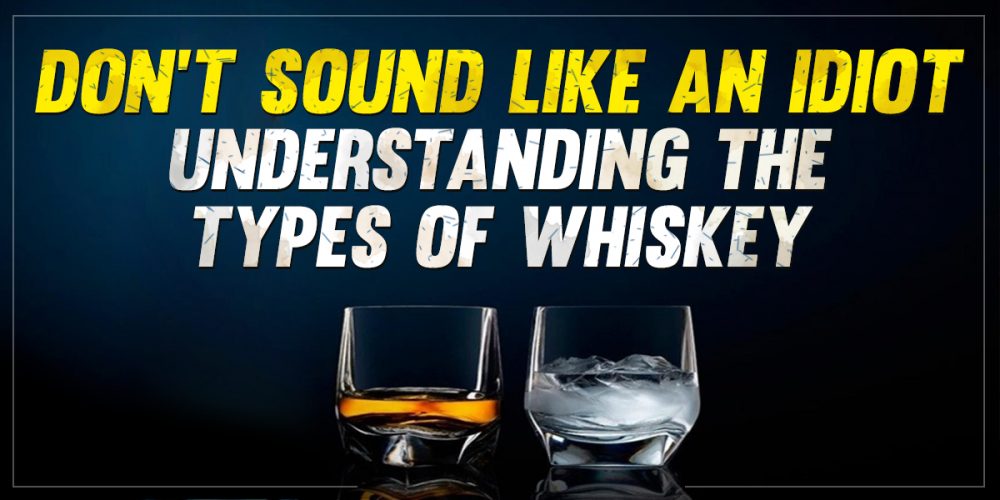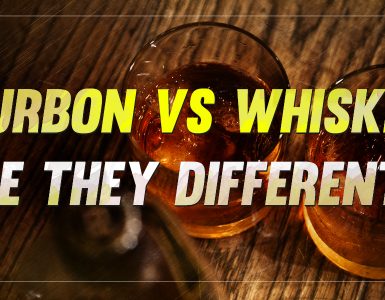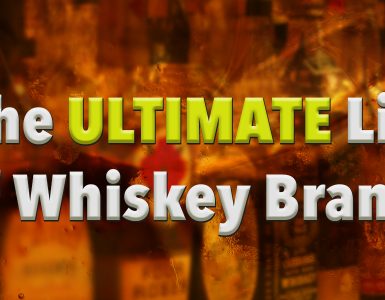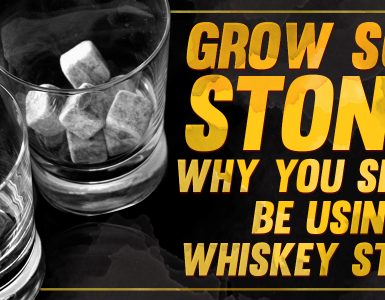Whiskey, at its core, is a type of distilled alcoholic beverage that is made from a mash of fermented grains which are typically aged in wooden casks. It is a drink celebrated and enjoyed around the world. It is no wonder then that many countries have produced specialty whiskey drinks, which use different grains, casks, and processes, that are unique to their locality.
Increasing what you know about the distinct types of whiskey out there will not only help you look knowledgeable, it can also greatly heighten your whiskey drinking experience. As you explore each type, from bourbon to Scotch, you will know what kind of taste to look for, bold or subtle, and how to savor them properly.
The Different Whiskeys and Whiskies
First, depending on the origin of the drink, it can be spelled as either whiskey or whisky. The USA and Ireland prefer to use whiskey while Canada, Japan, and Scotland use whisky. However, the main differences lie in – the type of grain, the length of ageing, the area of distillation, the water source, and the kind of cask – all of which affect how the whiskey tastes.
In a typical process of producing whiskey, the grains are heated in water and fermented using yeast, thus creating what is called a mash. This process also breaks down the starches in the grain to sugar, leading to a dark liquid called wort. From here, a large part of the process will differ depending on the distillery and its origin.
- Bourbon Whiskey is a type of American whiskey, known for its sweetness, that is made from a grain mixture that is primarily corn. It is required by law that the spirit is produced in the U.S. Parts of its creation process are also mandated by law. It must be distilled until it reaches between 65 to 80% alcohol by volume level. Furthermore, the barrels used for aging must be made from new charred American white oak, giving it its characteristic smoky taste. Popular brands include Jim Beam, Knob Creek, and Blanton’s.
There is a kind of bourbon called ‘straight bourbon’ which is required by law to be aged for at least 2 years. There is no minimum requirement for aging the other kinds of bourbon. Note that bourbon containing other spirits, coloring, and flavoring can only be labelled as ‘blended bourbon’ if it is comprised of at least 51% straight bourbon.
- Tennessee Whiskey meets many of the same requirements as bourbon. The main difference lies in the use of the Lincoln County process wherein the Tennessee whiskey must be filtered through sugar maple charcoal. Like its name suggests, popular brands, such as Jack Daniel’s, are typically produced in the state of Tennessee – apart from the George Dickel brand.
- Scotch Whisky is 100% made in Scotland and most aspects of its production process are dictated by law. It must be aged in oak barrels for at least 3 years and have an alcohol by volume level of less than 94.8%. Traditionally, the majority of Scotch whiskies were made from malted barley, however there are now many blended grain Scotch whiskies available. Scotch is known for the distinct kick and earthy flavor that separates it from the rest. Chivas Regal, Johnnie Walker, Grant’s, and Ballantine’s are all examples of Scotch whisky brands.
- Rye. Depending on where it’s made, the components of rye whisky/whiskey may differ. Canadian rye whisky has very relaxed rules when it comes to making the drink. Canadian whisky is only required by law to be mashed, distilled, and aged for at least three years in Canada. It has no restrictions on the rye content. Canadian whisky brands include Crown Royal, which is also popular in the United States, from Diageo and Alberta Premium, which is 100% rye, from Beam Suntory.
- American rye whiskey, on the other hand, has stricter rules. It must be distilled from at least 51% rye, must have less than 80% alcohol by volume, and must be aged in new oak barrels. Because of these restrictions, most Canadian whiskies cannot be labelled and sold as rye whiskeys in the United States. The rye gives it a unique fiery spice that people can either love or hate. WhistlePig Straight Rye and Angel’s Envy Finished Rye are both examples of American rye whiskey brands.
- Irish Whiskey is popularly consumed in Ireland during St. Patrick’s Day. Many consider it the birthplace of whiskey before spreading to Scotland, the U.S.A., and Canada. By law, Irish whiskey must have an alcohol by volume level of less than 94.8%, aged in wooden casks for at least 3 years, and made strictly in Ireland. Conventionally, it was made using a blend of malted and unmalted barley that is then distilled in pot stills, however, there are now Irish whiskeys that are made from continuous distillation or a combination of both methods. It’s known to be smoother than Scotch, less sweet than bourbon, and less spicy than rye. Irish whiskey examples include Midleton, Teeling, Green Spot, and Jameson.
- Japanese Whisky. There are also Japanese whiskies, such as the award-winning Suntory and Nikka brands, available worldwide. It is also spelled as whisky because Suntory’s first whisky distiller, Masataka Taketsuru, studied in Scotland and came to love the taste of Scotch. In Japan, whisky is commonly drunk while eating Japanese food, such as sushi and grilled fish, because of how the whisky’s finesse and balance complement the flavors of their cuisine.
- Other Kinds. Due to the popularity of whiskey around the world, many distilleries have popped up in all sorts of countries. The Australian whisky brand, Sullivans Cove French Oak Cask, garnered awards in a global setting for its quality and distinct taste. There’s also Taiwan’s Kavalan, Sweden’s Mackmyra Whisky, and Germany’s Schlitzer Destillerie, available in the market today.
The Subtypes of Whiskey
You’ve probably also seen terms like blended and single malt on whiskey bottles. These terms are the subtypes of whiskeys. Using these subtypes, combinations, such as Scotch single malt whiskies and blended rye whiskeys, are possible.
- Single Malt Whiskeys are the most common subtype of whiskey that you’ll encounter. They are made from a single distillery using only one batch of malted grain. It’s also one of the purest subtypes of whiskeys. Drinking it can help you find out what you like and don’t like in a certain kind of whiskey.
- Single Cask Whiskeys, as its name suggests, is bottled only from a single cask. No other previously produced whiskeys are mixed with it. A bottle of single cask whiskey usually contains the information about the cask it came from. They’re more expensive due to their novelty and rarity.
- Cask Strength Whiskey. Because this is whiskey bottled straight from the cask with little to no dilution, its alcoholic kick is very high. Some people buy cask strength whiskey in order to dilute it to their desired level.
- Blended Whiskeys are made from mixing together the same main type of whiskey, for example, blending different kinds of bourbon together. You won’t normally find different main types combined. They may also contain neutral grain spirits, coloring, and flavorings. In most countries, their laws dictate that the age of the blended whiskey on the product must use the age of the youngest whiskey in the blend. This is true for Scotch whiskies and Irish whiskeys. Popular brands include Johnny Walker’s Blue Label and Chivas Regal’s 18-Year-Old Blended Scotch Whiskey.
The Types of Whiskey that are Right for You
Exploring and tasting all the diverse kinds of whiskeys/whiskies out there is part of the fun of being an enthusiast. Aside from the different whiskey types, there are also several ways to prepare and enjoy your drink. You can enjoy drinking it neat or with ice. You can take your time and savor the drink by itself or you can pair it with food such as chocolate and sushi.
At the end of the day, the best bottle of whiskey will always be about what you enjoyed the most. Finding your favorite kind always starts with the first sip, so go out there and explore all that the world of whiskey drinking has to offer.
















